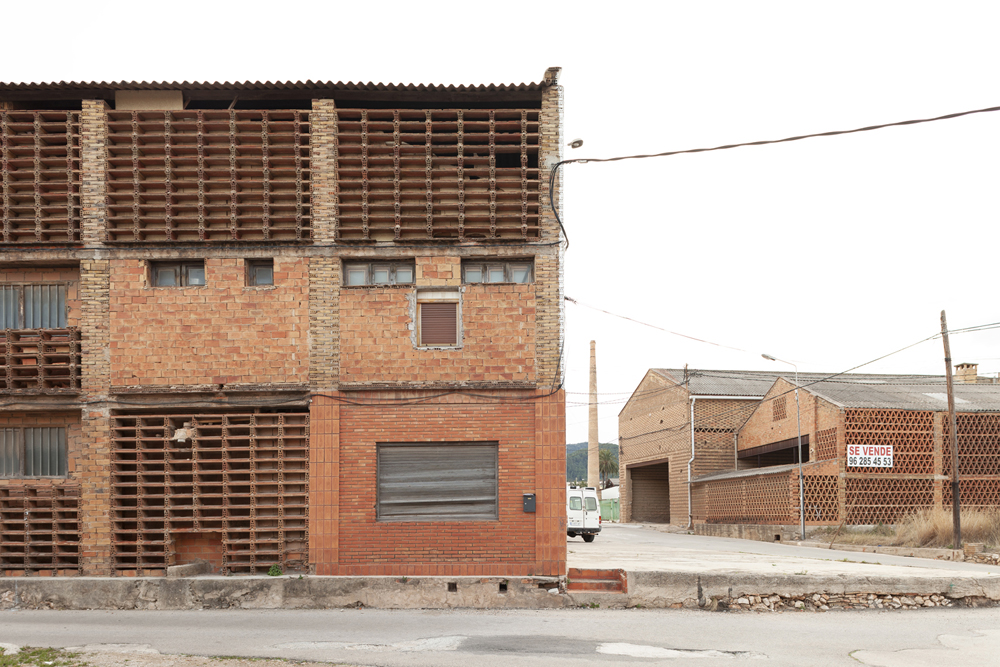
Benimeli
Passeig de Els Rajolars, 35
1904 (original complex)
Privada
Storeroom and joiner's workshop
3.123m²
2.052m²
Benimeli’s industrial complex comprised one of the first factories to appear in the area, although its current configuration is not the original one. The land registry from 1941 shows a dryer, a small reservoir and two small furnaces, evidencing this plot’s ceramic activity. A few years later, these furnaces were replaced by another larger Hoffman one, characteristic of the area, the presence of which is revealed by the chimney seen in the 1945 orthophoto. Subsequently, more warehouses were raised until the current configuration was reached, characterised by being the most compact of all.
In this factory, all industrial spaces are concentrated in just 1500 square metres of built footprint, developed across five adjoining bays with three floors each. Taking advantage of this arrangement, the floors above the oven were used for dryers, thus using the heat from below to dry the moulded pieces. The heat from the furnace rose through holes in the floor made to help dry these pieces more effectively.
The general structure of the building is reasonably well preserved at present, although unfortunately the furnace was demolished in a renovation carried out once bricks were no longer made there in order to accommodate that area to its new use. The only vestige of this element that remains is the side wall that separates the space between the furnace and the adjoining warehouse, since it is part of the supporting structure.
Also worthy of note are the screens that closes off the drying areas on the upper floors. These are some of the most characteristic of the entire area, perfectly reflecting the popular character of these constructions which made use of any type of ceramic piece to close off these spaces. Specifically, they feature flat bricks arranged horizontally on keystones made of violin-shaped joists, all elements intended for developing structures. Fortunately, they are in a relatively good state, although some parts have been plastered or covered over. Finally, mention should also be made of the warehouse used for receiving the raw materials, recognisable for the presence of part of the lifting machinery at its rear.
